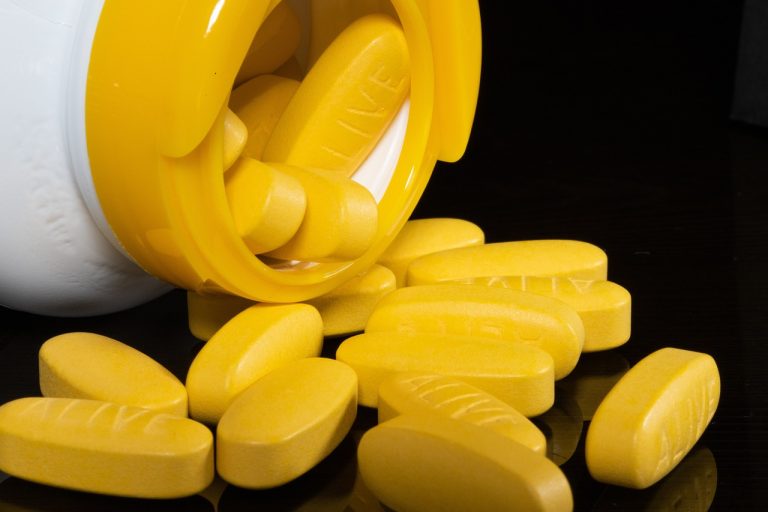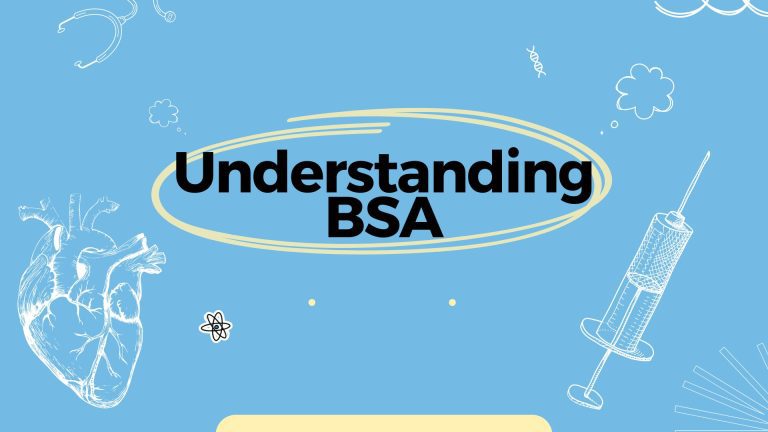Book Appointment Now

Understanding the Biopharmaceutics Classification System (BCS)
The Biopharmaceutics Classification System (BCS) is a scientific framework that categorizes drugs based on their solubility and intestinal permeability. Developed to facilitate the drug development process, BCS provides critical insights into how drugs behave in the human body, particularly how they are absorbed into the bloodstream.
By understanding these properties, pharmaceutical scientists can more efficiently predict drugs’ in vivo performance, streamline formulation strategies, and navigate regulatory pathways.
BCS is crucial in pharmaceutical sciences for several reasons. Firstly, it aids in the rational design of drug formulations, ensuring that active ingredients are delivered effectively to their intended sites of action.
Secondly, BCS plays a pivotal role in regulatory processes, enabling drug manufacturers to obtain waivers for certain in vivo bioavailability and bioequivalence studies, thereby reducing the time and cost of bringing new drugs to market.
Moreover, BCS helps maintain the quality and consistency of drug products, ensuring they meet the necessary safety and efficacy standards.
What is the Biopharmaceutics Classification System (BCS)?
The Biopharmaceutics Classification System (BCS) is a scientific model that classifies drug substances based on their aqueous solubility and intestinal permeability. The primary purpose of BCS is to predict the drug absorption process and its subsequent bioavailability.
This system helps understand drug products’ dissolution and absorption characteristics, which are critical for ensuring therapeutic efficacy and safety.
The BCS categorizes drugs into four classes:
- Class I: High solubility, high permeability
- Class II: Low solubility, high permeability
- Class III: High solubility, low permeability
- Class IV: Low solubility, low permeability
Each class provides valuable insights into how a drug will behave in the body, guiding the development and optimization of drug formulations.
History and Development of BCS
Dr. Gordon Amidon introduced the Biopharmaceutics Classification System in the early 1990s as a theoretical framework to streamline the drug development process. Dr. Amidon’s work was instrumental in shifting the focus towards understanding the relationship between a drug’s physical-chemical properties and its bioavailability.
The development of BCS was driven by the need to reduce the complexity and cost of drug development, particularly by identifying cases where in vivo bioavailability and bioequivalence studies could be waived based on in vitro data.
Since its inception, BCS has been widely adopted and has become a foundational element in pharmaceutical research and development. It has facilitated the creation of more efficient drug development strategies and improved the predictability of a drug’s performance in the human body.
Regulatory Significance and Adoption by Organizations
BCS’s regulatory significance is profound, as it provides a scientific basis for regulatory decisions regarding drug approval and quality control. Major regulatory agencies, including the U.S. Food and Drug Administration (FDA) and the European Medicines Agency (EMA), have incorporated BCS into their guidelines and regulatory frameworks.
- FDA: The FDA recognizes BCS as a critical tool for biowaivers, which allow for the waiver of in vivo bioequivalence studies under certain conditions. The FDA’s Biopharmaceutics Classification System Guidance provides detailed criteria and methodologies for classifying drugs and applying for biowaivers. This approach significantly accelerates the drug approval process and reduces development costs.
- EMA: The EMA has adopted the BCS framework to streamline the approval process for generic drugs and new drug applications. The EMA’s guidelines on the BCS-based biowaiver provide a clear pathway for demonstrating bioequivalence through in vitro testing, thus facilitating faster access to essential medicines.
By adopting the BCS framework, regulatory agencies aim to enhance the efficiency of the drug development process, ensure consistent quality and performance of drug products, and ultimately improve patient outcomes.
The Four BCS Classes
The Biopharmaceutics Classification System (BCS) categorizes drugs into four distinct classes based on their solubility and permeability. Each class provides insights into the expected behavior of the drug in the human body, particularly its absorption and bioavailability.
Understanding these classes helps formulate effective drug delivery systems and optimize therapeutic outcomes.
Class I: High Solubility, High Permeability
Characteristics:
- Drugs in Class I are characterized by high solubility and high permeability.
- These drugs dissolve easily in the gastrointestinal (GI) tract and are readily absorbed into the bloodstream.
Examples:
- Metoprolol
- Propranolol
- Lisinopril
Implications for Drug Development:
- Class I drugs generally exhibit predictable and consistent absorption profiles.
- Formulation strategies can focus on optimizing the dosage form and ensuring stability, as absorption issues are minimal.
- Regulatory pathways may allow for biowaivers based on in vitro dissolution data, simplifying the approval process.
Class II: Low Solubility, High Permeability
Characteristics:
- Drugs in Class II have low solubility but high permeability.
- These drugs can permeate the intestinal membrane efficiently but may face challenges dissolving in the GI tract.
Examples:
- Ibuprofen
- Ketoconazole
- Carbamazepine
Challenges and Strategies:
- The primary challenge is enhancing the solubility of these drugs to improve their bioavailability.
- To increase solubility, techniques such as solid dispersion, micronization, and the use of solubilizing excipients can be employed.
- Formulation approaches may include lipid-based delivery systems or self-emulsifying drug delivery systems (SEDDS).
Class III: High Solubility, Low Permeability
Characteristics:
- Drugs in Class III exhibit high solubility but low permeability.
- These drugs dissolve readily in the GI tract but face barriers in crossing the intestinal membrane.
Examples:
- Atenolol
- Cimetidine
- Metformin
Challenges and Strategies:
- The main challenge is enhancing the permeability of these drugs to improve their absorption.
- Strategies may include the use of permeability enhancers, such as surfactants or co-administration with absorption enhancers.
- Formulation efforts might focus on improving the drug’s interaction with the intestinal membrane, possibly through nanotechnology or targeted delivery systems.
Class IV: Low Solubility, Low Permeability
Characteristics:
- Drugs in Class IV are characterized by low solubility and low permeability.
- These drugs present significant challenges for both dissolution in the GI tract and absorption into the bloodstream.
Examples:
- Hydrochlorothiazide
- Paclitaxel
- Ritonavir
Challenges and Strategies:
- The dual challenge of low solubility and low permeability makes formulation and delivery particularly difficult.
- Advanced formulation techniques are required, such as nanocrystals, complexation with cyclodextrins, or the development of prodrugs.
- Researchers may explore innovative delivery systems like lipid nanoparticles or bioadhesive formulations to enhance both solubility and permeability.
Implications for Drug Development:
- Class IV drugs often require a comprehensive approach to formulation design, considering multiple factors to overcome both solubility and permeability issues.
- These drugs may face a more complex regulatory pathway, with extensive in vivo studies required to demonstrate bioavailability and efficacy.
Criteria for BCS Classification
The Biopharmaceutics Classification System (BCS) uses specific criteria to categorize drugs based on their solubility and permeability. Understanding these criteria is crucial for accurately classifying drugs and predicting their behavior in the human body. This section outlines the definitions of high and low solubility and permeability and the methods used to determine these properties.
Definitions of High and Low Solubility
High Solubility:
- A drug is considered highly soluble when the highest dose strength is soluble in 250 mL or less of aqueous media over a pH range of 1 to 7.5.
- This criterion ensures that the drug can dissolve in the fluids present in the gastrointestinal (GI) tract, facilitating its absorption.
Low Solubility:
- A drug has low solubility if it does not meet the high solubility criteria.
- Low-solubility drugs may face challenges in dissolving adequately in the GI tract, potentially limiting their bioavailability.
Definitions of High and Low Permeability
High Permeability:
- A drug is considered highly permeable when the extent of absorption in humans is greater than or equal to 90% of the administered dose, based on mass-balance or in comparison to an intravenous reference dose.
- High permeability indicates that the drug can efficiently cross the intestinal membrane and enter the bloodstream.
Low Permeability:
- A drug is classified as having low permeability if it does not meet the high permeability criteria.
- Low permeability drugs may face challenges in crossing the intestinal barrier, affecting their absorption and bioavailability.
Methods and Tests Used to Determine Solubility and Permeability
Solubility Testing:
- Equilibrium Solubility: The equilibrium solubility method involves dissolving the drug in aqueous media of varying pH (typically 1 to 7.5) and measuring the concentration of the drug in solution after reaching equilibrium.
- Shake Flask Method: This traditional method involves shaking a known quantity of the drug with a solvent until equilibrium is reached, followed by filtration and concentration measurement.
- HPLC Analysis: High-performance liquid chromatography (HPLC) is often used to accurately quantify the concentration of the drug in solution.
Permeability Testing:
- Caco-2 Cell Model: The Caco-2 cell model mimics the intestinal barrier using human epithelial colorectal adenocarcinoma cells. The drug’s permeability is assessed by measuring its transport across the Caco-2 cell monolayer.
- In Situ Perfusion Studies: These studies involve perfusing a segment of the intestine with a drug solution and measuring the rate of drug disappearance from the perfusate.
- In Vivo Absorption Studies: These studies involve administering the drug to human or animal subjects and measuring the extent of absorption through pharmacokinetic analysis.
Additional Methods:
- Parallel Artificial Membrane Permeability Assay (PAMPA): This assay uses an artificial membrane to simulate the intestinal barrier and measure drug permeability.
- Log P (Partition Coefficient): The partition coefficient between octanol and water can provide insights into the drug’s lipophilicity and, indirectly, its permeability.
Applications of BCS in Drug Development
The Biopharmaceutics Classification System (BCS) plays a pivotal role in various aspects of drug development. BCS guides formulation design, regulatory submissions, and quality control processes by providing a framework to understand drug solubility and permeability. This section explores how BCS is applied in these critical areas.
Formulation Design
Guiding Formulation Strategies:
- Class I Drugs (High Solubility, High Permeability): Since these drugs are readily soluble and permeable, the formulation focus is on optimizing the dosage form for stability and patient compliance. Standard oral dosage forms like tablets and capsules are typically effective.
- Class II Drugs (Low Solubility, High Permeability): The main challenge is enhancing solubility to improve bioavailability. Techniques such as solid dispersions, nanocrystals, micronization, and the use of solubilizing agents are commonly employed. Lipid-based formulations and self-emulsifying drug delivery systems (SEDDS) are also effective.
- Class III Drugs (High Solubility, Low Permeability): Improving permeability is the primary focus. Strategies include using permeation enhancers, prodrugs, and formulation approaches like nanoemulsions or liposomes that facilitate drug transport across the intestinal membrane.
- Class IV Drugs (Low Solubility, Low Permeability): These drugs present the most significant formulation challenges. Advanced techniques such as complexation with cyclodextrins, development of prodrugs, and innovative delivery systems like bioadhesive formulations and lipid nanoparticles are explored to enhance both solubility and permeability.
Case Studies and Examples:
- Ibuprofen (Class II): Solubility enhancement techniques such as solid dispersions have been used to improve the bioavailability of ibuprofen.
- Metformin (Class III): Formulation strategies involving permeation enhancers have been investigated to improve the absorption of metformin.
Regulatory Aspects
Impact on Regulatory Submissions and Approvals:
- Biowaivers: BCS enables the use of biowaivers for in vivo bioequivalence studies. For highly soluble and permeable drugs (Class I), in vitro dissolution testing can replace in vivo bioequivalence studies, expediting the approval process and reducing costs. Regulatory agencies like the FDA and EMA provide guidelines on biowaivers based on BCS classification.
Guidelines and Pathways:
- FDA: The FDA’s Biopharmaceutics Classification System Guidance offers detailed criteria for classifying drugs and obtaining biowaivers. This approach simplifies regulatory submissions for certain drug products, particularly generics.
- EMA: The EMA has adopted similar guidelines, allowing for streamlined approval processes for generic drugs and new formulations based on BCS classification.
Case Studies:
- Propranolol (Class I): The FDA granted a biowaiver for generic propranolol based on its high solubility and high permeability, allowing in vitro testing to demonstrate bioequivalence.
Quality Control
Role in Quality Control and Consistency:
- Dissolution Testing: BCS guides the development of dissolution testing methods that ensure consistent drug release and bioavailability. Dissolution testing is crucial for quality control for Class I and III drugs, as it directly correlates with in vivo performance.
- In Vitro-In Vivo Correlation (IVIVC): BCS aids in establishing IVIVC, particularly for Class II and Class III drugs. IVIVC helps predict in vivo drug performance based on in vitro data, ensuring batch-to-batch consistency and overall product quality.
Examples:
- Atenolol (Class III): Dissolution testing methods developed based on BCS principles ensure consistent drug release and therapeutic efficacy of atenolol tablets.
Challenges and Limitations of BCS
While the Biopharmaceutics Classification System (BCS) provides a valuable framework for understanding drug solubility and permeability, it is not without its challenges and limitations. This section outlines some of the key issues associated with BCS and their impact on drug development and regulatory processes.
Limitations in Predicting In Vivo Drug Behavior
Variability in Gastrointestinal Conditions:
- The BCS assumes a consistent and predictable gastrointestinal (GI) environment, but in reality, factors such as pH, gastric emptying time, and intestinal motility can vary significantly between individuals and even within the same individual at different times. These variations can affect drug dissolution and absorption.
Complex Drug-Drug and Drug-Food Interactions:
- BCS does not fully account for interactions between drugs and food or other drugs, which can significantly impact solubility and permeability. For example, the presence of food can enhance or inhibit the absorption of certain drugs, complicating predictions based solely on BCS classification.
Issues with Certain Drug Categories
Prodrugs:
- Prodrugs are inactive compounds that are metabolized into active drugs within the body. BCS classification of prodrugs can be challenging because their solubility and permeability may differ from the active form. The system may not adequately predict the bioavailability of prodrugs.
Poorly Soluble Drugs:
- Drugs with extremely low solubility pose significant challenges. Even within the low solubility categories (Class II and Class IV), there can be wide variability in dissolution behavior, making it difficult to apply a one-size-fits-all approach to formulation and regulatory strategies.
Potential Misclassification and Its Impact
Inaccurate Classification:
- The methods used to determine solubility and permeability may not always be precise, leading to potential misclassification. Factors such as experimental conditions, analytical techniques, and biological variability can contribute to inaccuracies.
Impact on Drug Development:
- Misclassification can lead to inappropriate formulation strategies or misguided regulatory submissions, resulting in increased development costs and delayed market entry. For instance, a drug mistakenly classified as high solubility may not undergo necessary solubility enhancement processes, leading to poor bioavailability.
Limitations in Addressing Complex Formulations
Combination Products:
- Combination products containing multiple active ingredients with different solubility and permeability profiles present a unique challenge. BCS does not provide specific guidance on how to classify and handle such complex formulations.
Advanced Drug Delivery Systems:
- Innovative drug delivery systems, such as nanoparticles, liposomes, and controlled-release formulations, often have complex behaviors that BCS does not fully encompass. These systems may require additional considerations beyond simple solubility and permeability measures.
Regulatory Challenges
Global Harmonization:
- While major regulatory agencies like the FDA and EMA have adopted BCS, there can be discrepancies in guidelines and acceptance criteria across different regions. This lack of global harmonization can complicate international drug development and regulatory approval processes.
Evolving Science:
- As scientific understanding of drug absorption and metabolism evolves, the BCS framework may require updates and modifications to remain relevant. Staying abreast of these changes and integrating new scientific insights into BCS guidelines is an ongoing challenge.
Future Directions and Innovations
The Biopharmaceutics Classification System (BCS) has significantly impacted drug development and regulatory processes. However, as the pharmaceutical landscape evolves, so must the BCS framework. This section explores potential future directions and innovations that could enhance the effectiveness and applicability of BCS.
Advances in Understanding Solubility and Permeability
Enhanced Analytical Techniques:
- High-Resolution Imaging: Advanced imaging techniques, such as confocal microscopy and atomic force microscopy, offer detailed insights into drug dissolution and absorption processes at the molecular level.
- Advanced Spectroscopy: Techniques like nuclear magnetic resonance (NMR) and mass spectrometry (MS) provide precise measurements of drug solubility and permeability, enhancing classification accuracy.
In Silico Modeling:
- Computational Simulations: In silico models can predict drug solubility and permeability based on molecular structure, helping to identify potential formulation issues early in the development process.
- Machine Learning Algorithms: These algorithms can analyze vast datasets to identify patterns and predict drug behavior, potentially offering more accurate BCS classification.
Emerging Technologies and Methods to Address BCS Limitations
Nanotechnology:
- Nanoparticles: Nanoparticle formulations can enhance the solubility and permeability of poorly soluble and poorly permeable drugs (Class IV), making them more bioavailable.
- Lipid-Based Nanocarriers: These carriers can improve the delivery and absorption of drugs, particularly those in Class II and Class III, by enhancing both solubility and permeability.
Bioenhancers:
- Permeability Enhancers: Compounds that increase the permeability of the intestinal membrane can be co-formulated with drugs to improve absorption.
- Solubilizing Agents: New solubilizing agents and excipients can significantly enhance the solubility of Class II and Class IV drugs, improving their bioavailability.
Potential Updates and Revisions to the BCS Framework
Incorporating Drug-Drug and Drug-Food Interactions:
- Dynamic BCS Models: Future BCS models may include variables for drug-drug and drug-food interactions, providing a more comprehensive prediction of in vivo behavior.
- Real-World Data Integration: Using real-world data from clinical studies and patient outcomes to refine and update BCS classifications.
Broadening the Scope:
- Combination Products: Developing specific guidelines for classifying and evaluating combination products containing multiple active ingredients.
- Advanced Drug Delivery Systems: Including criteria and methodologies for evaluating innovative drug delivery systems, such as sustained-release formulations and targeted delivery mechanisms.
Innovations in Drug Delivery Systems
Smart Drug Delivery:
- Responsive Drug Delivery Systems: These systems can respond to physiological changes (e.g., pH, temperature) to release drugs at optimal times and locations within the GI tract.
- Targeted Delivery: Advances in targeting technologies, such as ligand-receptor binding and magnetic targeting, can improve the delivery of drugs to specific tissues or organs, enhancing efficacy and reducing side effects.
3D Printing:
- Personalized Medicine: 3D printing technology can create personalized dosage forms tailored to individual patient needs, improving therapeutic outcomes and adherence.
- Complex Formulations: 3D printing can produce complex drug formulations with precise control over release profiles, enhancing the effectiveness of combination therapies.

Founder of the PTCBFreePracticeTest.com.



